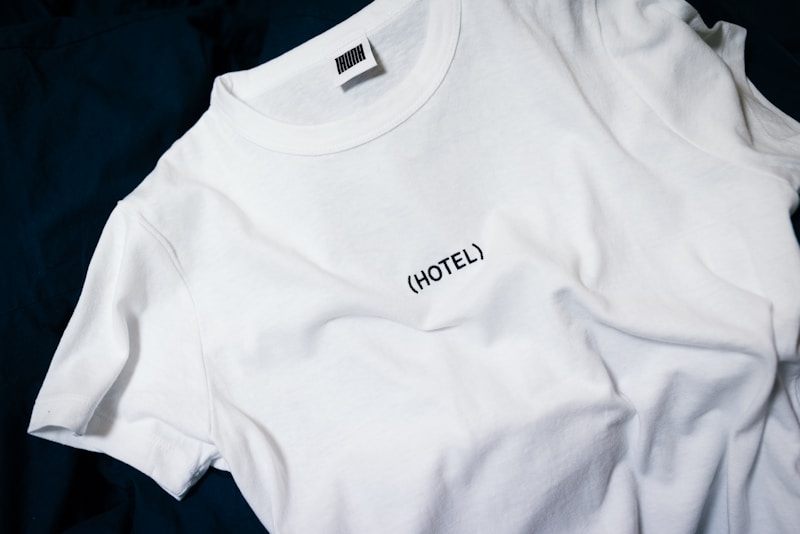Exploring Modifications to Enhance Fit: A Comprehensive Guide
Understanding the Importance of Fit Modifications
In the world of fashion and apparel, achieving the perfect fit is often seen as the holy grail. Whether it's a tailored suit, a chic dress, or comfortable casual wear, the fit can make or break an outfit. However, not every body is created equal, and achieving that ideal fit might require some modifications. This article delves into the various modifications that can enhance fit, providing insights and tips for those seeking to refine their wardrobe.
The Basics of Fit in Fashion
Before we dive into the modifications themselves, it's essential to understand what fit means in the context of clothing. Fit refers to how well a garment conforms to the body’s shape and size. The right fit not only enhances appearance but also contributes to comfort and confidence. Clothing that is too tight or too loose can lead to discomfort and an unflattering look. Therefore, understanding and applying fit modifications is crucial.
Common Fit Issues
Various fit issues can arise when choosing or purchasing clothing. Some of the most common fit problems include:
- Too tight in certain areas (e.g., bust, hips, thighs)
- Too loose in others (e.g., waist, cuffs)
- Pulling or bunching at seams
- Poorly aligned hemlines
- Inconsistent sizing across different brands
Types of Fit Modifications
To address these common issues, several modifications can be made to enhance fit. Below are some of the most effective techniques:
| Modification Type | Description | Ideal For |
| Taking In | Reducing the size of a garment by adjusting the seams. | Loose blouses or dresses, tailored suits. |
| Letting Out | Increasing the size of a garment by adjusting the seams. | Garments that become too tight over time. |
| Shortening | Cutting or adjusting the length of sleeves, pants, or skirts. | Too-long trousers or dresses. |
| Adding Darts | Creating structured shape by adding darts to fitted areas. | Blouses or dresses needing more definition. |
| Hem Adjustments | Altering the bottom hemline for a polished appearance. | Pants, skirts, and dresses. |
Taking In and Letting Out
Taking in and letting out covers the most common alterations. When garments are too loose, they can be taken in at the side seams or the back. For instance, a well-fitted blazer or jacket may require taking in at the waist to create a more tailored silhouette. Conversely, letting out seams is ideal for pieces that may have shrunk or if weight gain necessitates a larger size.
Shortening and Lengthening
Another common modification involves adjusting the length of garments. Pants that are too long can be unflatteringly baggy and even pose tripping hazards. Shortening the hemline can also create a better proportion, aligning the outfit with current fashion trends. On the other hand, it's essential to maintain the garment’s overall design when shortening or lengthening.
Adding Darts for Definition
Darts can transform a loose garment into a fitted masterpiece by adding shape where it is needed most. They can be particularly effective in blouses or dresses that require more definition at the bust line or waist. Adding darts allows the fabric to contour to the body's natural curves, ensuring a flattering fit.
Choosing the Right Fabric
The fabric of a garment plays a critical role in how well it fits. Fabrics that have some stretch, such as spandex blends, can accommodate movement better than rigid materials. However, when altering garments, consider both fabric type and composition. Some may resist alterations due to their structure, while others may lend themselves to a more flexible fit.
DIY Modifications vs. Professional Tailoring
While some modifications can be made at home for those familiar with sewing or alterations, other adjustments might require a professional tailor. If intricate changes are needed (such as adjusting the structure of a tailored jacket), it is often advisable to seek professional advice and assistance. For general tasks, online tutorials can provide guidance—just ensure you have the right tools and a clear understanding of the process.

Maintaining Fit Over Time
Once you’ve achieved the perfect fit, it’s essential to maintain it. Consider the care recommendations for your garments, including washing, drying, and storing. For instance, avoiding high-heat settings when drying can prevent shrinkage while proper hanging techniques can preserve shape. Develop a regular routine for checking fit, especially if there are fluctuations in weight.
Fit in the Digital Dressing Room Era
With technology evolving quickly, virtual fitting rooms are becoming an integral part of online shopping. These tools help consumers visualize how clothing will fit their unique body shape and size, reducing the likelihood of common fit issues. As technology progresses, so does the ability to personalize fit, allowing for a more customized shopping experience.
Conclusion: The Journey to the Perfect Fit
Exploring modifications to enhance fit is an essential journey for anyone looking to improve their wardrobe. By understanding the common fit issues and the solutions available, individuals can avoid the pitfalls of ill-fitting garments. Remember, a well-fitted outfit boosts confidence and elegance, leading to a more positive impression both personally and professionally. Take the time to explore fit options, consider professional tailoring when needed, and maintain your garments to enjoy outfits that look and feel fabulous for years to come.
Embrace the modifications that work for you, and don't hesitate to seek help if you're uncertain. The right fit can turn an ordinary outfit into an extraordinary one!